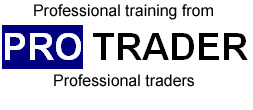Navinder Singh Sarao it turns out is a pretty useful trader one of his former colleagues at the company in the UK where he was trained says that Sarao had around £2.5 million pounds with him in his trading account when he left the company.
Many people have been asking how he could possibly compete with the high-frequency traders while based in his parent’s house in sunny Hounslow. Well it turns out that one of the data servers for the Chicago Mercantile Exchange is located in ………….. wait for it …………Slough !
And the nearer you are to the server, the quicker your order hits the market.
It means he was in a position to get his orders queued ahead of City-based traders, even if they hit the button at exactly the same point in time as him.
Certainly the SEC is blaming him in part for the Flash crash which may or may not be the case. However many others are pointing out that all he was doing was spoofing the multitude of front running high-frequency trading computers. In other words he was not hurting real traders.
So how does front running and spoofing work?
Front running does not have to be illegal. In high-frequency trading the front-running computers are looking to get in ahead of big orders in the expectation that when the big order hits prices will be driven a little further in that direction. So on the S&P if the front running computer sees a big sell order located slightly above current price it will nip in and place its sell order slightly before that price so it gets filled first. As soon as price moves down a tick or two when the big front run sell order hits the front running Computer will cover its position for a small profit. They do this hundreds and thousands of times a day. If they do it as stated above it then front-running is not illegal.
Spoofers such as Navinder is alleged to be recognise that there is a trading opportunity by double bluffing the front-running computers and this is apparently what he was doing.
A key part of the allegations against him are that Sarao used computer programmes (algorithms) to place fake orders in the eMini S&P futures market.
So called ‘spoof’ orders aim to manipulate market prices up or down by showing an apparent but fictitious demand or supply for the underlying asset.
Effectively spoofers aim to lure front-running computers into the market by placing large fictitious orders and then they take the other side of the front-running computers orders then manipulate the market in the opposite direction to make their profit.
So the spoofer will place a large number of sell orders slightly above current market price but with no real intention of those orders ever being filled. They will also place a smaller genuine buy order slightly below these levels. This is the order that they want filled.
The front-running computers see this big batch of sell orders and attempt to front run it by rushing in first – in the hope that price will keep going down when the spoofers sell orders get hit. The spoofers genuine buy order effectively now fills the front runners sell order. So the spoofer in now long. To take his profit the spoofer can then pull all his sell orders and reverse the process on the buy side.
So the spoofers argument is that all he is hurting is the front running computers and nobody likes them anyway. The problem is when it all mushrooms and gets out of control as it did in the flash crash – then innocents are hurt …..bad.
All this happens in milliseconds and therefore it can be argued that such trading does not affect normal traders such as you and I. In fact on that single day he is accused of placing and cancelling orders 19,000 times so it is all really going on in the background unseen by us.
The problem is that spoofing quite understandably is illegal because by placing orders that you have no intention of ever getting filled you are deliberately misleading the market. Front-running on the other hand if carried out in the manner above is perfectly legal.

